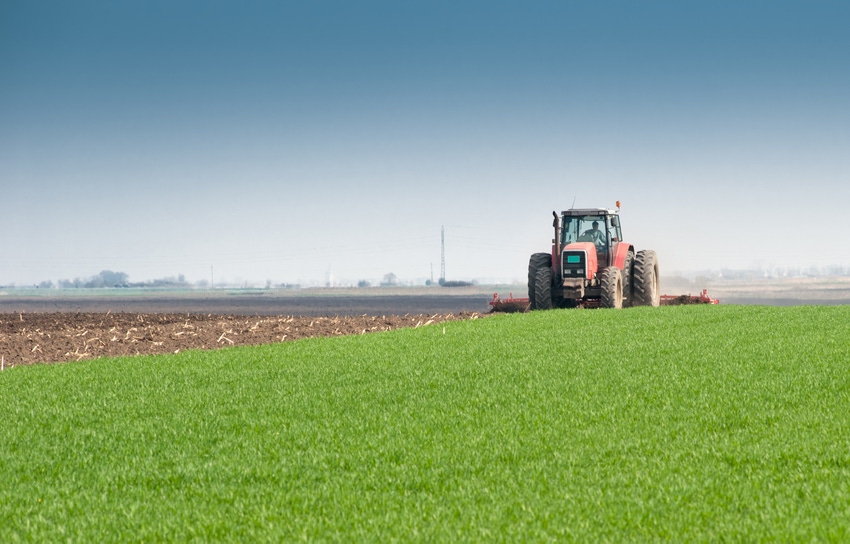Three trends will have significant impact over next 25 years.
July 2, 2018

Bottom line instead of brand loyalty. Tractors and harvesters will look more like computers. Data will drive productivity. These are just a few of the realities equipment manufacturers will have to contend with over the next 25 years, according to an Association of Equipment Manufacturers (AEM) research report written by the Context Network.
"We launched this research project in order to examine the broader trends with which our members will have to contend and to help them better prepare to compete in the marketplace of the future," AEM senior vice president of agriculture services Curt Blades said. "It would be to every manufacturer's benefit to sit up and take note of these industry-shaping trends."
The research project synthesized original research and expert interviews to explore the impact of several major trends that are influencing agriculture and mapped out the challenges and opportunities that manufacturers will face in building the next generation of farm equipment.
According to the AEM and Context report, three trends will have a significant impact on agriculture over the next 25 years:
1. Changing farm structure
Over the next 25 years, a massive shift in farm ownership will change the face of American agriculture — driven, in part, by the aging demographics of today’s farmers, according to the report.
“Economics is the primary driver of farm structure change,” said Doug Griffin, principal at Context Network. “Just as with most other industries, scale drives improvement in margin. Therefore, farms continue to evolve into large operations with improved efficiencies and lower cost.”
However, there are more than two farmers over the age of 65 for every farmer under the age of 45 in the industry today. The average age of farm operators is 58, which is higher than ever, and many of these farmers’ children have already gone on to establish their own careers off the farm.
According to Context’s research, the agricultural world is primed for a shift in operation and ownership as these farmers begin to retire and eventually pass the land on to their children. With little interest in working the land themselves and their own retirement to plan, many of these children will choose to sell their families’ land, leading to a mass increase in corporate farm ownership.
When it comes to equipment purchasing decisions, this means a shift toward bottom line-oriented decision-making and less emphasis on brand loyalty, the report suggested. As growers continue to increase in size, they will have greater buying power and increased leverage over the equipment manufacturer.
2. Accelerating adoption of precision ag tech
Precision agriculture technologies are already in use, but the next 25 years will determine who the dominant players will be — and fierce competition is expected.
“This latest wave of technology will provide substantial improvements in farming practices,” Griffin said. “Equipment manufacturers will be forced to either innovate and change with the times, or become irrelevant in the market.”
Today’s farmers already have access to software tools that can provide them with real-time field scouting and conditions reports. Sensors and soil sampling enable them to make on-the-spot decisions tied to their bottom line.
Griffin said more than 80% of farm operators surveyed by Context are using yield monitors, global positioning systems and soil sampling technologies.
The AEM/Context research found that farm operators are excited by the gains in productivity precision agriculture can provide. It also showed frustration surrounding the multiple sources of information and the inability of equipment brands to interface with one another. Operators want a single platform that ties together all aspects of their operation.
Thus, the race is on to create and implement such a platform, with equipment manufacturers competing with one another — and outside disruptors — to be first to market with such a technology. In 2017, investments in agricultural technology reached an estimated $2 billion.
Context forecasts that operators will increasingly depend on autonomous power units and artificial intelligence.
“Growers will gravitate toward the versatility offered by smaller machines, and technology will have a much shorter half-life than the actual equipment as growers become more comfortable adapting to the new products and services at their disposal,” the report noted.
3. Service-based economy
With more industrial-style farms using a growing array of technological advances to maximize productivity, the report said farmers will have a greater need for sound advice from a trusted advisor, and equipment manufacturers have a generational opportunity to fill that role.
The most valued service providers are able to interpret information and provide recommendations with a total enterprise profitability perspective of the operation. Ultimately, the role of “trusted advisor” will reside with whomever the grower shares their data and helps them manage and interpret the data.
“Today’s definition of ‘service’ usually refers to repairs and maintenance of equipment,” Griffin said. “In the future, service will relate to providing complete solutions to customers.”
Smarter, more technologically advanced equipment in farm fields will position manufacturers to offer the best advice, if they are able to expand their service offerings into the realm of providing complete solutions to agricultural operations.
As technology in agricultural equipment advances in complexity and reliance on software, operators will likely be less capable of servicing and repairing it. They will look for flexibility and agility from their equipment suppliers, and fast repairs during high-demand time periods will be critical.
You May Also Like


.png?width=300&auto=webp&quality=80&disable=upscale)
